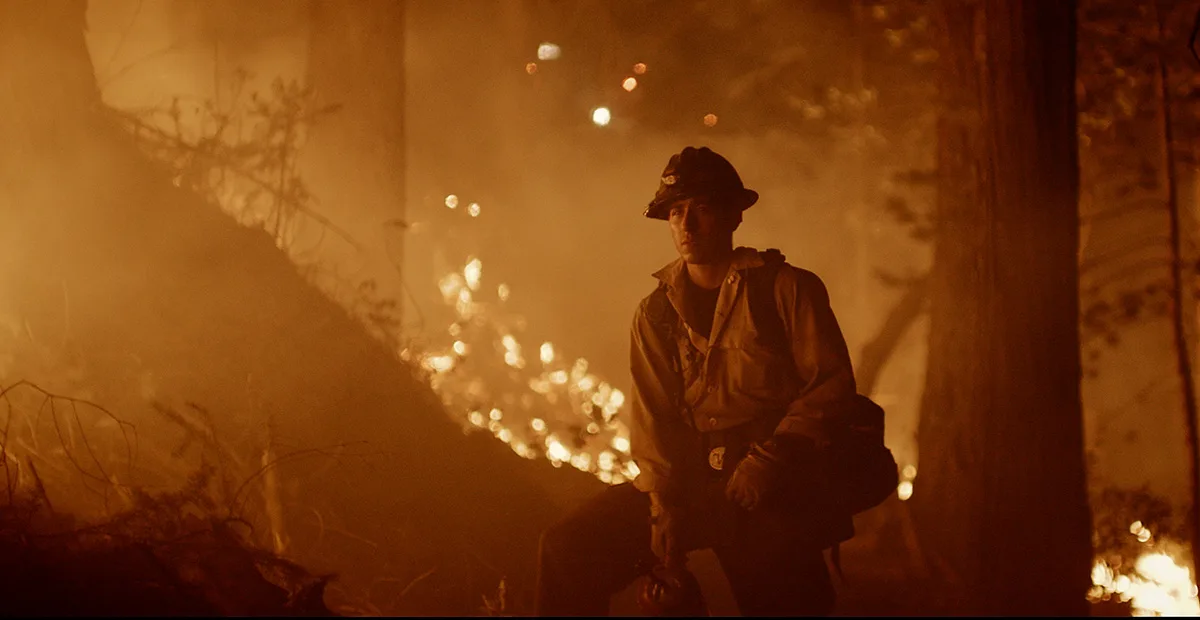
worthitorwoke.com
Hotshot
Hotshot is a 2023 documentary directed by Gabriel Kirkpatrick Mann that provides an in-depth look at the lives of elite wildland firefighters known as Hotshots. With unprecedented access, the film follows these brave men and women as they battle some of the most devastating wildfires in California history.
Hotshot Review
Hotshot is one of the most beautifully filmed documentaries to grace screens in years. Director and narrator Gabriel Kirkpatrick Mann plunges the audience deep into the annual infernos that ravage California and into the grueling, sweat-drenched lives of the elite Hotshot firefighting crews. But while its visuals captivate, the documentary focuses intently on the challenges faced by Hotshots, showcasing their grueling work, the difficult policies they navigate, and the unequal pay compared to regular firefighters.
At its core, Hotshot serves as an intimate tribute to Tanner’s girlfriend, a member of the Hotshots. Their relationship—shown through candid moments and heartfelt voiceovers—humanizes the heroes who run toward the flames while others flee. Yet this personal angle is just one of the film’s many threads. Tanner also explores the glaring disparities between how Hotshots are compensated compared to traditional firefighters, dives into the history of controlled burns pioneered by American Indians, and ventures into conspiracy territory by suggesting an industrial complex thrives on the repeated destruction caused by these fires.
While the documentary covers a wide range of topics, it largely maintains its focus on the hardships and systemic challenges faced by Hotshots. Tanner’s assertion that politicians and corporations profit from rebuilding efforts—while intriguing—is presented with little evidence beyond speculation. The argument, though plausible, would have benefitted from hard-hitting journalism or expert testimony to back it up. Meanwhile, the segments on controlled burns and their historical effectiveness feel more grounded and impactful, offering solutions that modern forestry officials inexplicably overlook. Tanner’s comparison to the wisdom of American Indians, who long used controlled burns to manage fire-prone landscapes, is one of the film’s most compelling points.
Where Hotshot truly shines is in its cinematography. The footage is breathtaking, capturing the sheer scale of the infernos with a visceral intensity that puts you right in the middle of the action. From towering walls of flame to the ash-covered aftermath, the visuals are both haunting and awe-inspiring. Tanner’s ability to immerse the audience in these high-stakes moments elevates the film beyond its narrative shortcomings.
The documentary also effectively debunks the narrative that climate change plays any part in these intensifying fires. Through historical comparisons and anecdotal observations, Tanner highlights how mismanagement of undergrowth and a failure to implement controlled burns have exacerbated the crisis. It’s a compelling argument that’s sure to spark firey debate.
In the end, Hotshot is as much a mixed bag as it is a visual masterpiece. While it falters somewhat in its attempt to weave together its many themes, it succeeds in making a powerful case for controlled burns and shedding light on the lives of the unsung heroes battling these blazes. Despite its flaws, Hotshot is still a must-watch for anyone looking to better understand the complex forces at play in America’s wildfire epidemic and marvel at the resilience of those who face it head-on.
WOKE ELEMENTS
American Indians, Hallowed Be Thy Name
While the writer/director/narrator is correct to repeatedly point out that the area’s American Indian population was once able to control the annual fires with basic forestry techniques and stoneage tools, he also has a very slight tendency to romanticize them as “one with nature, etc.” He also makes the claim that “…we killed them all…” Obviously, no one alive today had any part in conquering America. Furthermore, the only ancestors I had here then were American Indians.
It’s worth noting that while he clearly admires the Indians and mourns their fate, he doesn’t dwell on it or come across as sanctimonious (aside from that one instance where he places the blame for their deaths on us).
He Who Smelt It
The documentarian completely ignores the liberal politics that have exacerbated the wildfire problems (i.e. prioritizing the delta smelt over full reservoirs). Instead, he focuses entirely on a proposed industrial complex comprised of greedy car dealers and other businesses profiting from the aftermath of the annual destruction.
He might even be correct about this, but he offers no receipts, just suppositions relayed as facts.
Shorty Fire Burnin’ On The Dance Floor (not woke)
Although he clearly thinks much of his girlfriend and her abilities, rather than chanting the woke benediction, “Women are the same as men and can do anything a man can do,” he acknowledges that there are rightly virtually no women hotshots because almost no woman can physically do the job. Furthermore, he shows that his girlfriend has to work twice as hard year-round to be able to do the job.
Climate Shmimate (not woke)
The documentarian does an excellent job of showing that a possible changing climate has nothing to do with these fires and their worsening.
The post Hotshot first appeared on Worth it or Woke.














